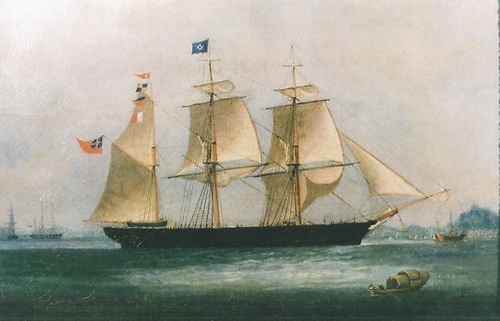 Hartlepool Sports & Leisure
Hartlepool Sports & Leisure
- Cinemas, Theatres & Dance Halls
- Musicians & Bands
- At the Seaside
- Parks & Gardens
- Caravans & Camping
- Sport
 Hartlepool Transport
Hartlepool Transport
- Airfields & Aircraft
- Railways
- Buses & Commercial Vehicles
- Cars & Motorbikes
- The Ferry
- Horse drawn vehicles
 A Potted History Of Hartlepool
A Potted History Of Hartlepool
- Unidentified images
- Sources of information
- Archaeology & Ancient History
- Local Government
- Printed Notices & Papers
- Aerial Photographs
- Events, Visitors & VIPs
 Hartlepool Trade & Industry
Hartlepool Trade & Industry
- Trade Fairs
- Local businesses
- Iron & Steel
- Shops & Shopping
- Fishing industry
- Farming & Rural Landscape
- Pubs, Clubs & Hotels
 Hartlepool Health & Education
Hartlepool Health & Education
- Schools & Colleges
- Hospitals & Workhouses
- Public Health & Utilities
- Ambulance Service
- Police Services
- Fire Services
 Hartlepool People
Hartlepool People
 Hartlepool Places
Hartlepool Places
 Hartlepool at War
Hartlepool at War
 Hartlepool Ships & Shipping
Hartlepool Ships & Shipping

Fanny Nicholson - painting
What we know about this image :
This painting of the Fanny Nicholson (owned by a great-grandson of Captain Batthews), is thought to depict the vessel on the Pearl River downstream from what was then the city of Canton (now Guangzhou), at the deep water port of Whampoa. It is believed to have been painted by a local artist in 1858.
Date (of image) : 1858
Donor : Mr. Peter Graham
Creator : unknown artist
Location
Related items :
 Captain Batthews and the Fanny Nicholson
Captain Batthews and the Fanny Nicholson
The painting belongs to a great grandson of Captain Batthews and is thought to depict the vessel on the Pearl River downstream from what was then the city of Canton (now Guangzhou),at a deep water port Whampoa. We think it was painted in 1858 presumably by a local artist.
Captain Batthews took his wife and some of the children on at least some of his trips and it is family belief that the figures on deck are the parents and one daughter, the grandmother of the current owner and sister to my grandmother who was left in England on that far eastern trip. In a letter dated June 13th, 1858 from Hong Kong, he refers to taking a cargo to Buenos Aires and from there to Table Bay, Cape of Good Hope. Here he took on a cargo of horses etc. delivering them to Mauritious, then on to Penang for a cargo of rice, to Singapore, Macau, and thence to Whampoa, at which time presumably the artist painted the vessel. There he loaded a cargo of tea stating a plan to return direct to Liverpool via Hong Kong. He refers to "much sickness prevailing here and hereabouts" and "self with Elizabeth and the child very poorly" and two sailors "sick with fever"; sadly wife is recorded as dying early in 1859 (it's not known whether she died during the voyage or shortly after arriving at Sunderland).
In the painting the vessel is flying the Freemasons flag at the masthead as Captain Batthews was a Freemason and from writings in the letter very much a God fearing man.
As regards ownership of the vessel I note Lloyds register puts Rutherford as owner from 1856 through to 1870. It may be this refers to the owner at time of building but my understanding from family history notes is that Captain Batthews was part owner with a Mr. Williamson and the vessel was sold around 1862, either shortly after or before Captain Batthews death, to work in Australian and Pacific waters working in the coal trade, transporting Pacific Islanders to work in the Queensland outback; she was Registered in 1867 in Sydney, NSW with James Smith noted as owner and master. In 1869 he sold her to a Hobart (Tasmania) whaling syndicate and was converted for whaling purposes. On her 2nd voyage, in either November or December 1872 (dates vary from different sources), whilst at anchor in Frenchman’s Bay, close to the city of Albany on the south coast of Western Australia during a storm, she was blown ashore onto Goode Beach (also known as Vancouver beach presumably because he also anchored there when mapping the area). Whilst there was no loss of life, the ship was unsalvageable though the cargo of whale oil was saved.
Curiously about 10 years later another whaling vessel the "Runnymede", of similar dimensions, was also blown ashore in a storm apparently resting only a few yards away.
The proximity of the wrecks has apparently led to some confusion when formal studies by the marine archaeologists of the Western Australian Museum have been made. The two vessels differed however in their construction with the Fanny Nicholson having wooden frames and the Runnymede having steel frames. The Fanny Nicholson is the southern-most wreck. A couple of years ago I visited a marine archaeologist Michael McCarthy at the Shipwreck Section of the Western Australian Museum in Fremantle who mentioned that very little of the wreck remains and what there is may well be buried in the sand and only visible at times of the year when beach sand washed away.
More detail »




